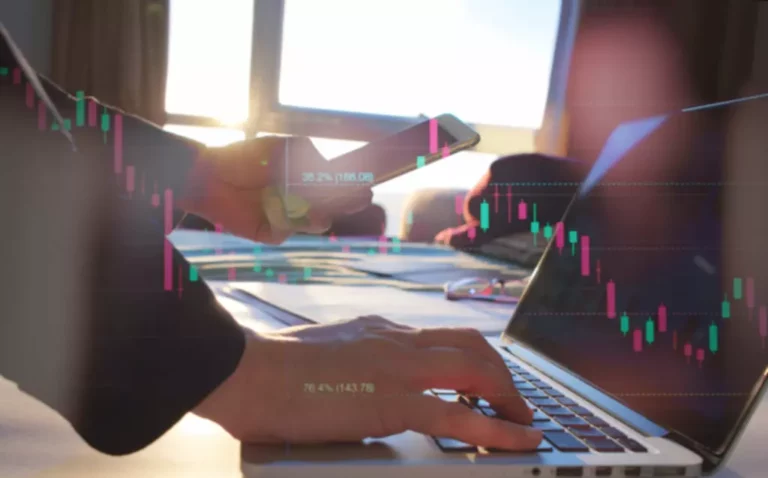Content
Standardisation is an essential feature of ETDs that helps increase their liquidity and enhances the determination of their value. The contract rules are already set and transparent, making it easier for everyone to trade. Trading parties can discuss specific terms, creating contracts designed to manage individual risks. However, the absence of a standardised way of trading with OTCs can make it harder to buy and sell them, increase the risks, and possibly make it more etd meaning expensive to make transactions.
What are Exchange-Traded Derivatives?
Exchange-traded derivatives are well suited for retail investors, unlike their over-the-counter cousins. These security types support complex markets where there is more than one instruction per account, security, and method combination. As part of the Investment Management community, benefit from a consolidated single view of your trading activity across Rates, Credit, Equity, FX, Paper and AML Risk Assessments now Repo.
What Is an Exchange-Traded Derivative?
It is contrary to normal contractual principles for claims for breach of contract and to the ordinary https://www.xcritical.com/ measure of creditor claims under bankruptcy law. BNP Paribas is committed to providing market leading Exchange Traded Derivatives (ETD) and Over the Counter (OTC) clearing services to our clients. We deliver an integrated cross-asset clearing service, allowing clients to access markets globally, today and for the long haul. Our platform offers a full range of products, including Fixed Income, Equity, Commodity and FX derivatives, thanks to our strong market-making and risk management capabilities globally. As new instruments are implemented and new CCPs are established, our strategy is to offer the full range of instruments for clearing.
Exchange trading derivatives – ETD meaning types and features
Despite their association with the economic meltdown, many investors still consider them a good investment, as they offer a decent trading volume and diversify portfolio risks. Swaps are typically not traded on an exchange but can be part of over-the-counter transactions. Stock forwards and options allow for highly leveraged bets on a stock’s price movement, predicting its future value.

Sponsored Access: Transforming Market Participation in Capital Markets
VIX options are unique options in which the underlying is the Cboe’s own index which tracks the volatility of the S&P 500 index option prices. The VIX can be traded via options and futures, as well as through options of the ETFs that track the VIX, such as the iPath S&P 500 VIX Short-Term Futures ETN (VXX). The judges commended the company for its potential to transform the way that asset managers execute their trades in corporate bonds and bring greater efficiencies to the work flow in that market, and potentially other fixed income markets around the world. Variation margin – the other type of collateral – is paid daily from one side of the trade to the other, to reflect the current market value of the trade.
Because of the highly standardized nature of futures contracts, it is easy for buyers and sellers to unwind or close out their exposure before the expiration of the contract. Derivatives are financial contracts whose value is linked to the value of an underlying asset. They are complex financial instruments that are used for various purposes, including speculation, hedging and getting access to additional assets or markets.
- In most major markets like the US and Europe, equity trades typically settle after T+2 (Trade date plus 2 business days).
- However, many of the problems that have faced the derivatives markets have appeared in the over-the-counter (OTC) derivatives market rather than in products traded on a derivatives exchange.
- One common form of option product familiar to many consumers is insurance for homes and automobiles.
- Since such contracts are unstandardized, they are customizable to suit the requirements of both parties involved.
- Contrarily, OTC derivatives depend on obligations between two parties, which poses a risk of the other party not fulfilling their part of the agreement.
- Exchange-traded derivatives, which involve commodities as the underlying asset, are traded on price fluctuations.
- This liquidity attracts a wide range of participants, from retail investors to institutional traders, thereby increasing market efficiency.
The exchange is considered to be safer because it is subject to a lot of regulation. Therefore, it does a good job of preventing the few big participants from taking advantage of the market in their favor. OTCs are mainly available to big players in the market, like large corporations and major financial organisations.
High liquidity – The ETD market is highly liquid, meaning that ETDs have considerable market depth. This enables the traders to quickly match counterparties to fulfil their orders at good prices without significant loss. The Exchange Traded Derivatives (ETD) module of Oracle FLEXCUBE isan automated and flexible back office system with the capability to processexchange traded derivative instruments such as Options and Futures. Individuals and institutions may also look for arbitrage opportunities, as when the current buying price of an asset falls below the price specified in a futures contract to sell the asset. Investments in securities market are subject to market risks, read all the related documents carefully before investing.
The law mandated the clearing of certain swaps at registered exchanges and imposed various restrictions on derivatives. The Commission determines which swaps are subject to mandatory clearing and whether a derivatives exchange is eligible to clear a certain type of swap contract. Since these contracts are not publicly traded, no market price is available to validate the theoretical valuation. Most of the model’s results are input-dependent (meaning the final price depends heavily on how we derive the pricing inputs).[65]Therefore, it is common that OTC derivatives are priced by Independent Agents that both counterparties involved in the deal designate upfront (when signing the contract). Lock products (such as swaps, futures, or forwards) obligate the contractual parties to the terms over the life of the contract.
Option products (such as interest rate swaps) provide the buyer the right, but not the obligation to enter the contract under the terms specified. Investors large and small appreciate the fact that these investments are understandable, reliable, and liquid. Trust in financial markets translates to liquidity, which in turn means efficient access and pricing.
Features such as Advanced Charts, Watchlists, F&O Insights @ Fingertips, Payoff Analyzer, Basket Order, Cloud Order, Option Express, e-ATM, Systematic Equity Plan (SEP), i-Track, i-Lens, Price Improvement Order, Flash Trade, Strategy Builder etc., are offered by ICICI Securities. ICICI Securities is not making the offer, holds no warranty & is not representative of the delivery service, suitability, merchantability, availability or quality of the offer and/or products/services under the offer. The information mentioned herein above is only for consumption by the client and such material should not be redistributed.
Initial margin is held to cover the losses that could arise in the period between the defaulter’s last variation margin payment and the point at which the surviving party is able to hedge or replace the trade. Trade reporting across multiple regulatory regimes is an integrated part of our trade processing workflow across a number of asset classes. Enabling investment management firms to allocate post-trade on either a bilateral basis or via give-ups to multiple Prime Brokers, ensuring accurate booking of fund and account level trading activity. As a leading Foreign Exchange Prime Broker (FXPB), BNP Paribas serves a diversified institutional client base, including multi-strategy and macro hedge funds, asset managers, banks, large non-bank liquidity providers and agency brokers across regions. As a leading Clearer, BNP Paribas works closely with clients to ensure that our clearing and execution offering is most relevant from a product or exchange perspective. We have made strategic long-term investment in our clearing platform to ensure that product innovation and leadership is coupled with banking stability, strong balance sheet, and a global reach.
Investors can take advantage of the liquidity by offsetting their contracts when needed. They can do so by selling the current position out in the market or buying another position in the opposite direction. For example, the emergence of the first futures contracts can be traced back to the second millennium BC in Mesopotamia. The introduction of new valuation techniques sparked the rapid development of the derivatives market. For legislators and committees responsible for financial reform related to derivatives in the United States and elsewhere, distinguishing between hedging and speculative derivatives activities has been a nontrivial challenge. The distinction is critical because regulation should help to isolate and curtail speculation with derivatives, especially for “systemically significant” institutions whose default could be large enough to threaten the entire financial system.
The concept of exchange-traded derivatives traces back to the 19th century when organized futures markets emerged in Chicago, USA. The Chicago Board of Trade (CBOT), founded in 1848, played a pivotal role in developing ETDs. Initially, these markets primarily focused on agricultural commodities, providing farmers and traders a means to manage price risks. Exchange-traded derivatives have standardized contracts with a transparent price, which enables them to be bought and sold easily.
